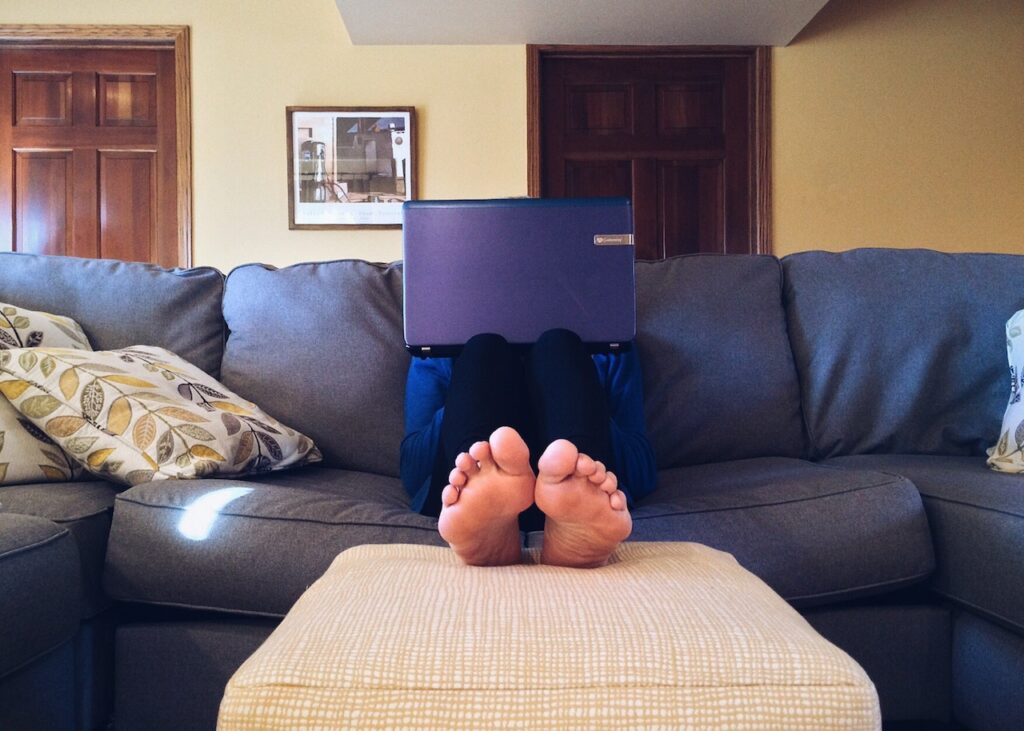Creating a healthy balance between online and offline time has become increasingly important in today’s digital age. While technology has brought many benefits and conveniences, it has also led to a blurring of boundaries between work and personal life, as well as increased screen time and sedentary behavior. As a result, many people are experiencing negative effects on their mental and physical health.
Understanding the concept of balance is key to achieving a healthy relationship with technology. Balance involves recognizing the importance of both online and offline activities, and finding a way to integrate them into daily life in a way that is sustainable and beneficial. This means being mindful of how much time is spent online, and making a conscious effort to engage in offline activities that promote well-being, such as exercise, socializing, and pursuing hobbies.
Practical ways to achieve balance include setting boundaries around technology use, such as designating specific times of day for checking emails or social media, and turning off electronic devices during meals or before bed. It also involves finding ways to incorporate offline activities into daily routines, such as taking a walk during lunch breaks or scheduling regular social outings. By prioritizing both online and offline activities, individuals can create a healthy and sustainable relationship with technology.
Key Takeaways
- Creating a healthy balance between online and offline time involves recognizing the importance of both and finding a way to integrate them into daily life.
- Practical ways to achieve balance include setting boundaries around technology use and incorporating offline activities into daily routines.
- By prioritizing both online and offline activities, individuals can create a sustainable and beneficial relationship with technology.
Understanding the Concept of Balance
The Importance of Balance
In today’s world, people are spending more time online than ever before. While the internet has made life easier in many ways, it has also led to an imbalance between online and offline time. This imbalance can have a negative impact on mental and physical health, relationships, and overall well-being. Therefore, it is crucial to understand the importance of balance and strive to achieve a healthy balance between online and offline time.
Balancing online and offline time means that individuals can enjoy the benefits of technology while also maintaining a healthy lifestyle. It allows individuals to stay connected with loved ones, stay informed, and be productive while also taking breaks to relax, exercise, and engage in other offline activities.
Defining Healthy Balance
A healthy balance between online and offline time means that an individual is able to manage their technology use in a way that enhances their life rather than detracting from it. This requires setting boundaries and being mindful of how much time is spent online versus offline.
There is no one-size-fits-all approach to achieving a healthy balance. It depends on an individual’s lifestyle, personal preferences, and responsibilities. However, some general guidelines can be helpful. For example, it is recommended to limit screen time before bed, take breaks every hour or so when working on a computer, and engage in offline activities such as exercise, hobbies, and spending time with loved ones.
In conclusion, understanding the concept of balance is crucial for achieving a healthy lifestyle. By striving to achieve a healthy balance between online and offline time, individuals can enjoy the benefits of technology while also maintaining their physical and mental health.
The Impact of Online and Offline Time
Excessive screen time can have negative effects on mental health, leading to increased anxiety and headaches. At the same time, offline time can have positive benefits for mental and physical health.
Effects of Excessive Screen Time
Spending too much time online can have a negative impact on mental health. Studies have shown that excessive screen time can lead to increased anxiety and depression. Additionally, staring at screens for extended periods of time can cause headaches and eye strain.
Benefits of Offline Time
Taking time away from screens and spending time offline can have positive benefits for mental and physical health. Engaging in physical activities and spending time with loved ones can improve mood and reduce stress. Additionally, taking breaks from screens can help reduce eye strain and headaches.
In order to maintain a healthy balance between online and offline time, it is important to be mindful of the amount of time spent online and to take regular breaks. It is also important to engage in physical activities and spend time with loved ones offline.
Practical Ways to Achieve Balance
Achieving a healthy balance between online and offline time can be challenging, but it’s essential for overall well-being. Here are some practical ways to help achieve balance:
Managing Notifications
Notifications can be a significant source of distraction and can make it difficult to focus on offline activities. To manage notifications, consider the following:
- Turn off notifications for non-essential apps.
- Set specific times to check notifications instead of constantly checking them throughout the day.
- Use “Do Not Disturb” mode during offline activities.
Scheduling Offline Activities
Scheduling offline activities can help ensure that you are dedicating time to activities that promote balance. Here are some ideas:
- Schedule regular exercise or outdoor activities.
- Plan social activities with friends and family.
- Set aside time for hobbies or creative pursuits.
Prioritizing Online Activities
Online activities can be enjoyable and productive, but they can also be time-consuming. To prioritize online activities, consider the following:
- Set specific times to check email and social media.
- Use productivity apps or browser extensions to limit time spent on non-essential websites.
- Consider taking breaks from social media or other online activities periodically.
By managing notifications, scheduling offline activities, and prioritizing online activities, it’s possible to achieve a healthy balance between online and offline time.
Role of Support Systems
Creating a healthy balance between online and offline time can be challenging, but having a support system can make it easier. Support systems can come in many forms, including parents, friends, and resources. In this section, we will discuss the role of support systems in helping individuals achieve a healthy balance between online and offline time.
Parental Guidance
Parents play a critical role in helping their children create a healthy balance between online and offline time. They can provide guidance and set rules around screen time, such as limiting the amount of time spent on electronic devices and establishing technology-free zones in the house. Parents can also model healthy habits themselves by setting aside time for offline activities and engaging in them with their children.
Leveraging Resources
In addition to parental guidance, there are many resources available to help individuals create a healthy balance between online and offline time. These resources can include educational materials, support groups, and online tools. For example, there are apps that can track screen time and provide reminders to take breaks. There are also websites that offer tips and advice on how to reduce screen time and increase offline activities.
By leveraging these resources, individuals can gain knowledge and support in their efforts to create a healthy balance between online and offline time. With the help of a support system, individuals can develop healthy habits and maintain them over time.
Online and Offline Time for Different Age Groups
Teens and Screen Time
Teens are among the most active users of the internet and social media. They spend a lot of time online, and this can impact their physical and mental well-being. Research shows that excessive screen time can lead to obesity, poor sleep, and depression. Therefore, it is important for parents to monitor their teen’s online activity and encourage them to balance their online and offline time.
One way to do this is to set limits on screen time. Parents can use parental control apps to limit the amount of time their teen spends online. They can also encourage their teen to engage in offline activities such as sports, hobbies, and spending time with friends and family.
Balancing Online and Offline Time for Students
For students, balancing online and offline time is crucial for their academic success and well-being. While the internet and technology have made learning more accessible, excessive screen time can lead to distractions and poor academic performance. Therefore, it is important for students to have a healthy balance between their online and offline time.
One way to achieve this is to set a schedule for online and offline activities. Students can allocate specific times for studying, socializing, and engaging in offline activities. They can also use productivity apps to stay focused and avoid distractions while studying.
In conclusion, balancing online and offline time is important for individuals of all ages. Parents and students can use various tools and strategies to achieve a healthy balance and improve their overall well-being.
Influence of Social Media and Video Games
Understanding Social Media Influence
Social media has become an integral part of daily life for many people, especially for the younger generation. It is a tool that can be used to connect with friends and family, share information, and stay up-to-date with current events. However, excessive use of social media can have negative effects on mental health, such as increased anxiety and depression.
One of the main concerns with social media is the spread of misinformation. False information can easily be shared and spread rapidly, leading to confusion and potentially harmful consequences. It is important for individuals to fact-check information before sharing it to prevent the spread of misinformation.
Another issue with social media is the pressure to present a perfect image. This can lead to feelings of inadequacy and low self-esteem, especially for young people who are still developing their sense of self. It is important to remember that social media only shows a curated version of reality and that everyone has flaws and imperfections.
Video Games and Screen Time
Video games have become a popular form of entertainment, especially among young people. However, excessive screen time can have negative effects on physical and mental health. It is important to maintain a healthy balance between screen time and other activities, such as exercise and socializing.
One of the concerns with video games is the potential for addiction. Some individuals may become so engrossed in a game that they neglect other responsibilities and activities. It is important to set limits on screen time and to prioritize other activities.
Another issue with video games is the potential for violent content. While research is inconclusive on the link between video game violence and real-life violence, it is important for parents to monitor the content their children are exposed to and to have open conversations about the impact of violent media.
In conclusion, social media and video games can have both positive and negative effects on mental and physical health. It is important for individuals to maintain a healthy balance between online and offline time and to be aware of the potential risks associated with excessive screen time.
Online Learning and EdTech
As technology advances, the world of education has been revolutionized by the introduction of online learning and educational technology (EdTech). Online learning provides students with the flexibility to learn at their own pace and on their own schedule, while EdTech tools like interactive whiteboards, tablets, and educational software help to enhance the learning experience.
Balancing EdTech and Offline Study
While online learning and EdTech have their benefits, it is important to find a balance between online and offline study. Spending too much time in front of a screen can lead to eye strain, headaches, and other health problems. It can also be difficult to focus and retain information when studying solely online.
To find a healthy balance, students can use a combination of online and offline resources. For example, they can take notes on paper while watching a lecture online, or use a textbook to supplement their online learning. It is also important to take regular breaks, exercise, and get plenty of rest to avoid burnout.
The Role of Books in Offline Learning
Books have long been a valuable resource for offline learning, and they continue to play an important role in education today. Unlike online resources, books do not require an internet connection and can be read anywhere, anytime. They also provide a break from screens and allow for a more focused and immersive learning experience.
When it comes to balancing online and offline study, books can be used to supplement online learning or as a primary resource for offline study. Students can use textbooks, reference books, and other educational materials to deepen their understanding of a subject and reinforce their learning.
In conclusion, online learning and EdTech have transformed the world of education, but it is important to find a healthy balance between online and offline study. By using a combination of online and offline resources, taking regular breaks, and getting plenty of rest, students can optimize their learning experience and achieve academic success.
Entertainment in the Digital Age
As technology advances, it has become easier than ever to access entertainment online. However, with the increase in screen time, it is important to find a balance between online and offline entertainment options. In this section, we will explore both digital and offline entertainment options.
Digital Entertainment
Digital entertainment has become a popular form of entertainment in recent years. With streaming services such as Netflix, Hulu, and Disney+, people can watch their favorite movies and TV shows at any time. Additionally, social media platforms like Instagram, TikTok, and YouTube provide endless hours of entertainment through user-generated content.
While digital entertainment can be a convenient and enjoyable way to spend time, it is important to monitor screen time. Too much screen time can lead to eye strain, headaches, and disrupted sleep patterns. It is recommended to take breaks every 20-30 minutes to rest your eyes and stretch your body.
Offline Entertainment Options
Offline entertainment options can provide a refreshing break from screen time. Activities such as reading, playing board games, and going for a walk can be enjoyable ways to spend time with friends and family. Additionally, hobbies such as painting, gardening, and cooking can provide a creative outlet and a sense of accomplishment.
When choosing offline entertainment options, it is important to consider your interests and preferences. Finding an activity that you enjoy can make it easier to stick to a routine and find a healthy balance between online and offline time.
In summary, digital entertainment and offline entertainment options both have their benefits. By finding a balance between the two, you can enjoy the best of both worlds and maintain a healthy lifestyle.
Conclusion
Finding a healthy balance between online and offline time can be challenging, but it is essential to maintain overall wellbeing and a healthy lifestyle. By taking small steps, individuals can make significant changes in their daily routine to achieve this balance.
It is important to set boundaries and limit the amount of time spent online. This can be done by scheduling specific times for online activities, turning off notifications, and avoiding the use of electronic devices before bed.
Regular exercise and physical activity can also contribute to a healthy balance between online and offline time. Taking breaks to stretch and move around can help reduce the negative effects of prolonged sitting and screen time.
In addition, engaging in hobbies and spending time with loved ones offline can provide a sense of fulfillment and satisfaction that may not be found online. It is important to prioritize these activities and make time for them in daily routines.
Overall, creating a healthy balance between online and offline time requires mindfulness and intentionality. By making small changes and prioritizing wellbeing, individuals can achieve a healthy and fulfilling lifestyle.
Frequently Asked Questions
What are some effective ways to balance your time between online and offline activities?
There are several effective ways to balance your time between online and offline activities. One way is to set a specific time limit for your online activities and stick to it. Another way is to prioritize your offline activities and make sure you schedule them into your day. You could also try taking breaks from your devices throughout the day to give your brain a chance to rest.
What should you do if you’re spending too much time online?
If you’re spending too much time online, it’s important to take a step back and assess your habits. Try setting specific goals for your online time, such as limiting your social media use to a certain amount of time each day. You could also try finding alternative activities to do offline, such as reading a book or going for a walk.
How can you prioritize offline activities in your daily routine?
To prioritize offline activities in your daily routine, try scheduling them into your day just like you would with your online activities. This could include setting aside time for exercise, hobbies, or spending time with friends and family. It’s also important to be intentional with your time and make sure you’re not letting your online activities take over your day.
What are the benefits of maintaining a healthy balance between online and offline time?
Maintaining a healthy balance between online and offline time can have several benefits, such as reducing stress, improving mental health, and increasing productivity. It can also improve your relationships with others and help you feel more connected to the world around you.
How can you set boundaries for your online and offline activities?
Setting boundaries for your online and offline activities can be done in several ways. One way is to turn off notifications for your social media and email accounts during certain times of the day. You could also try setting specific times for checking your devices and sticking to those times. It’s important to communicate your boundaries with others as well, so they know when you’re available and when you’re not.
What are some tips for creating a schedule that includes both online and offline activities?
When creating a schedule that includes both online and offline activities, it’s important to be intentional with your time. Try setting specific goals for your online and offline activities and scheduling them into your day. You could also try alternating between online and offline activities throughout the day to give your brain a chance to rest. Remember to be flexible and adjust your schedule as needed to maintain a healthy balance.





